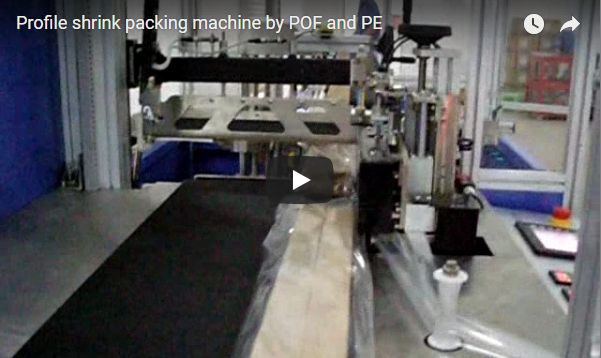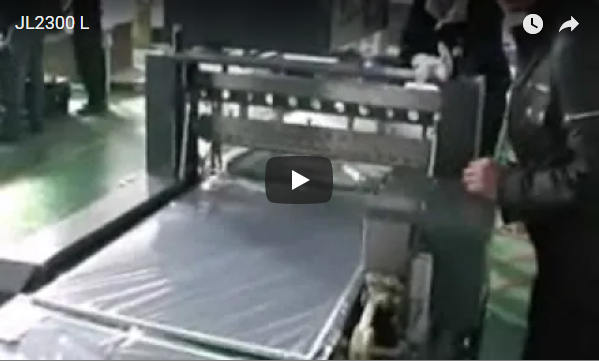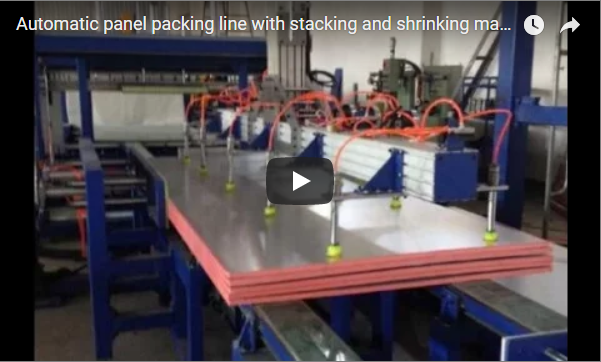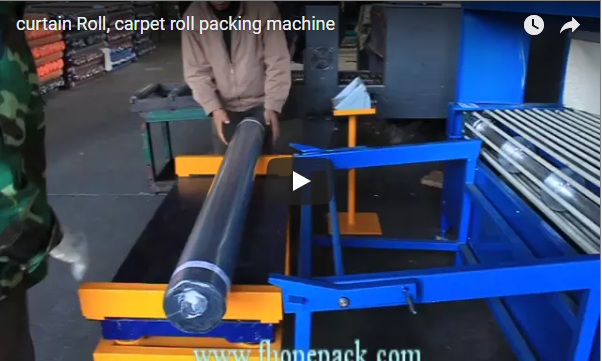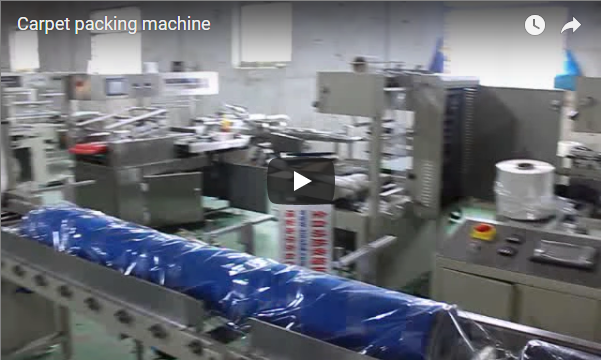Automated Door Packing and Shrink Wrapping Systems: Technical Overview and Operational Insights
1. Introduction to Automated Door Packaging
Automated packaging systems, such as the integrated Door Packing and Shrink Wrap Machine shown, represent a significant step forward for manufacturers and distributors handling large volumes of doors. These systems are engineered to provide a consistent, protective wrap, streamlining the packaging process from product infeed to final shrink application. This overview delves into the technical specifications, operational capabilities, and practical considerations associated with modern door shrink wrapping lines, aiming to provide insights relevant to industrial distribution and manufacturing environments.
2. Core Functionality and Process Flow
Understanding the typical operational sequence helps in evaluating system suitability:
- Infeed: Doors are introduced to the line, often via powered roller or belt conveyors. Sensor arrays detect product presence and dimensions.
- Film Application: The machine automatically drapes or wraps polyethylene (PE) shrink film around the door. This may involve L-bar sealers or continuous side-sealing mechanisms depending on the design.
- Sealing: The film is securely sealed around the product, creating a complete enclosure.
- Shrink Tunnel Passage: The wrapped door passes through a heated shrink tunnel where controlled hot air circulation causes the film to shrink tightly around the product contours.
- Cooling & Outfeed: Post-tunnel cooling may occur before the securely packaged door exits the system onto an outfeed conveyor, ready for palletizing or shipping.
3. Key Technical Specifications
Accurate specification is crucial for integrating such machinery into existing production lines. Key parameters for a typical automated door shrink wrap system include:
- Product Handling Capability:
- Maximum Door Height: Typically 2000mm - 2400mm
- Maximum Door Width: Typically 600mm - 1400mm
- Maximum Door Thickness: Typically 40mm - 180mm (Adjustable range is key)
- Throughput & Speed:
- Packaging Capacity: Ranges from 30 to 80+ doors per hour, dependent on door size, film type, and system configuration.
- Conveyor Speed: Variable, often synchronized with upstream/downstream processes.
- Shrink Film Compatibility:
- Material Type: Primarily Polyethylene (PE) shrink film.
- Film Roll Outer Diameter: Up to approx. 300mm - 500mm
- Film Roll Inner Core Diameter: Standard 76mm (3 inches)
- Maximum Film Roll Width: Up to approx. 1600mm - 2500mm (dependent on max door width/height configuration)
- Film Thickness Range: Specify compatible range (e.g., 50 - 120 microns).
- Shrink Tunnel Parameters:
- Operating Temperature Range: Adjustable, typically up to 200°C - 220°C.
- Heating Method: Often high-velocity hot air recirculation.
- Control System:
- Controller: Programmable Logic Controller (PLC) (e.g., Siemens, Allen-Bradley).
- Operator Interface: Human-Machine Interface (HMI) Touchscreen.
- Features: Recipe storage, diagnostic alerts, parameter adjustment (speed, temperature, seal time).
- Utility Requirements:
- Electrical: Typically 380V/480V, 50/60Hz, 3-Phase. Power consumption varies based on tunnel size and throughput.
- Compressed Air: Required for pneumatic actuators (specify pressure/consumption if applicable).
- Physical Characteristics:
- Approximate Machine Dimensions (L x W x H): Highly variable based on configuration (e.g., 7200mm x 2400mm x 2000mm for a specific model). Length significantly increases with added conveyor sections.
- Approximate Machine Weight: Typically 2000 kg - 3500 kg+, depending on construction and features.
4. Detailed System Capabilities
Beyond basic specifications, several features define the performance and utility of these systems:
4.1. Precision Sealing and Cutting
Modern systems employ various sealing technologies (e.g., thermal impulse, constant heat L-bar, side seal) designed for PE films. Precise temperature and dwell time control ensures strong, consistent seals without burning the film. Integrated film cutting mechanisms ensure clean separation after sealing.
4.2. Optimized Shrink Tunnel Performance
Effective shrink tunnels utilize controlled airflow patterns and stable temperature management to ensure uniform film shrinkage across all door surfaces. Features often include:
- Variable Air Velocity Control: Adapts airflow to different film types and product sizes.
- Efficient Insulation: Reduces energy loss and maintains stable internal temperatures.
- Conveyor System: Heat-resistant rollers or mesh belts designed for smooth product transport through the high-temperature zone.
4.3. Advanced Control and Automation
The PLC and HMI are central to operation:
- Product Recipes: Allows operators to save and recall specific settings (conveyor speed, tunnel temperature, seal times) for different door sizes or film types, ensuring rapid changeovers.
- Sensor Integration: Photo-eyes and sensors detect product position, initiate wrapping cycles, and monitor for jams or errors.
- Diagnostics: Provides real-time feedback on system status and assists in troubleshooting.
4.4. Robust Safety Integration
Operator safety is paramount. Standard features include:
- Emergency Stop Circuits: Strategically placed E-stop buttons.
- Interlocked Guarding: Physical barriers around moving parts and high-temperature zones that halt operation if opened.
- Light Curtains: Optional presence sensing devices at entry/exit points.
- Compliance: Often designed to meet regional safety standards (e.g., CE, OSHA).
4.5. Flexible Film Feed and Handling
Systems are designed for efficient film management:
- Powered Film Unwind: Ensures consistent film tension and prevents tears.
- Easy Roll Loading: Ergonomic designs facilitate quicker film roll changes.
- Film Perforation Options: May include devices to create small vents in the film, allowing air to escape during shrinking for a tighter fit on large, flat surfaces.
5. Operational Considerations and Experience Insights
Implementing and running an automated door packaging line involves practical aspects beyond the specifications:
- Installation & Integration: Requires careful planning for floor space, utility connections (power, potentially compressed air), and integration with existing conveyor lines.
- Operator Training: Essential for understanding HMI operation, recipe management, film loading, basic troubleshooting, and safety procedures.
- Material Consistency: Variations in shrink film quality (thickness, slip properties) can impact performance. Establishing consistent film suppliers (Example resource: PMMI - The Association for Packaging and Processing Technologies) is advisable.
- Temperature Management: Ambient factory temperature can influence shrink tunnel performance. Minor adjustments to tunnel setpoints may be needed seasonally or based on facility conditions.
- Maintenance Schedule: Routine checks on sealing elements, conveyor belts/rollers, heating elements, and safety circuits are crucial for longevity and consistent performance. Lubrication and cleaning schedules should be followed per manufacturer recommendations.
- Troubleshooting Common Issues: Operators should be trained to identify and address issues like incomplete seals (adjust temperature/dwell time), poor shrink (adjust temperature/airflow/speed), or film jams (check film path/tension).
6. Technical Advantages and Applications
Automated door shrink wrapping systems offer distinct advantages in industrial settings:
- Enhanced Packaging Consistency: Automated control ensures each door is wrapped and shrunk uniformly, improving package integrity and aesthetic appearance compared to manual methods.
- Increased Throughput: Significantly higher packaging rates compared to manual or semi-automatic processes, supporting high-volume production lines.
- Improved Product Protection: The tight shrink film provides robust protection against dust, moisture, scratches, and minor impacts during handling, storage, and transit.
- Reduced Manual Handling: Automation minimizes the labor required for the wrapping process itself, allowing personnel reallocation to other tasks.
- Material Efficiency: Precise film control can potentially optimize film usage compared to less controlled wrapping methods.
- Adaptability: Systems with adjustable parameters and recipe storage can effectively handle variations in door dimensions within their design range.
These systems are particularly beneficial for:
- Large-scale door manufacturers (interior, exterior, garage doors).
- Building material distribution centers.
- Furniture manufacturers packaging large flat-panel items similar to doors.
7. Warranty and Technical Support
Standard industry practice includes:
- Warranty Period: Often 1-2 years, covering defects in materials and workmanship. Clarify specifics with the manufacturer.
- Technical Support: Availability of support for installation guidance, operational training, troubleshooting assistance, and spare parts is critical for long-term operational success.
8. Conclusion
Automated door packing and shrink wrap machines are sophisticated systems designed to meet the demands of modern industrial packaging. By integrating automated film application, sealing, and heat shrinking, they provide a reliable, efficient, and consistent method for protecting doors and similar large items. Understanding the technical specifications, operational capabilities, and maintenance requirements allows businesses to effectively evaluate and implement this technology to enhance their packaging operations, product protection, and overall line efficiency.

